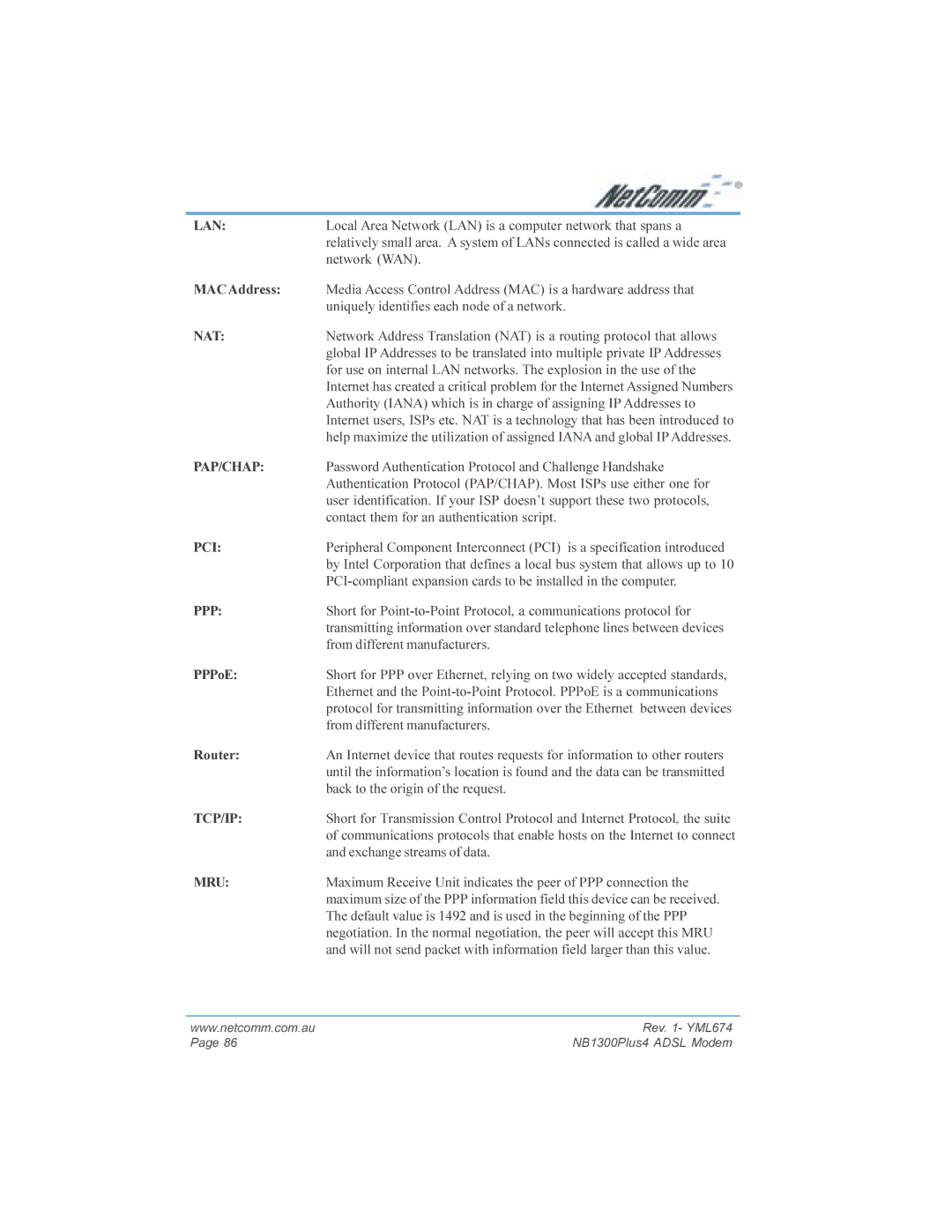
LAN: | Local Area Network (LAN) is a computer network that spans a |
| relatively small area. A system of LANs connected is called a wide area |
| network (WAN). |
MACAddress: | Media Access Control Address (MAC) is a hardware address that |
| uniquely identifies each node of a network. |
NAT: | Network Address Translation (NAT) is a routing protocol that allows |
| global IP Addresses to be translated into multiple private IP Addresses |
| for use on internal LAN networks. The explosion in the use of the |
| Internet has created a critical problem for the Internet Assigned Numbers |
| Authority (IANA) which is in charge of assigning IP Addresses to |
| Internet users, ISPs etc. NAT is a technology that has been introduced to |
| help maximize the utilization of assigned IANA and global IP Addresses. |
PAP/CHAP: | Password Authentication Protocol and Challenge Handshake |
| Authentication Protocol (PAP/CHAP). Most ISPs use either one for |
| user identification. If your ISP doesn’t support these two protocols, |
| contact them for an authentication script. |
PCI: | Peripheral Component Interconnect (PCI) is a specification introduced |
| by Intel Corporation that defines a local bus system that allows up to 10 |
|
PPP:Short for
PPPoE: | Short for PPP over Ethernet, relying on two widely accepted standards, |
| Ethernet and the |
| protocol for transmitting information over the Ethernet between devices |
| from different manufacturers. |
Router: | An Internet device that routes requests for information to other routers |
| until the information’s location is found and the data can be transmitted |
| back to the origin of the request. |
TCP/IP: | Short for Transmission Control Protocol and Internet Protocol, the suite |
| of communications protocols that enable hosts on the Internet to connect |
| and exchange streams of data. |
MRU: | Maximum Receive Unit indicates the peer of PPP connection the |
| maximum size of the PPP information field this device can be received. |
| The default value is 1492 and is used in the beginning of the PPP |
| negotiation. In the normal negotiation, the peer will accept this MRU |
| and will not send packet with information field larger than this value. |
www.netcomm.com.au | Rev. 1- YML674 |
Page 86 | NB1300Plus4 ADSL Modem |
